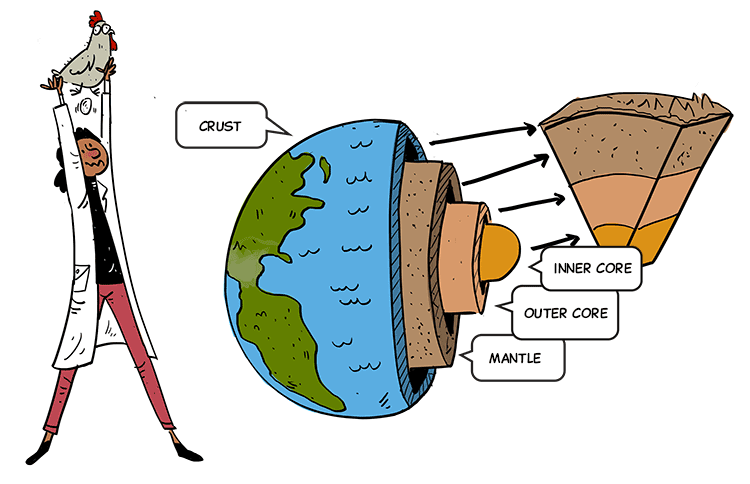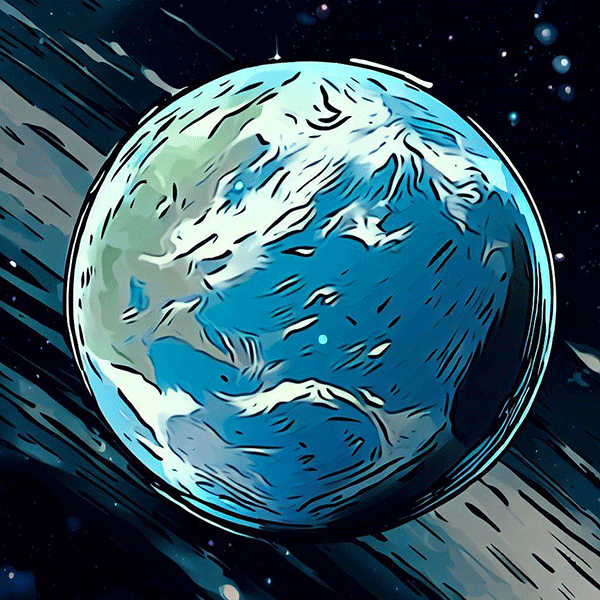Earth’s Inside Story: A Journey to the Center!
Have you ever wondered what’s under the ground we walk on? It’s not just dirt and rocks all the way down. Our Earth is like a giant chocolate layer cake, with different layers going all the way to the center of the Earth! So put on your explorer cap, and let’s dig in.
What’s Inside Our Planet?
Our Earth is made up of four key layers: the crust, the mantle, the outer core, and the inner core. Each layer is unique, with its own kind of stuff, temperatures, and sizes.
- The Crust: This is the top layer where we live. It’s the thinnest layer, just like the icing on a cake. Under the ocean, it’s about 5 kilometers thick, while under land, it can be up to 70 kilometers thick. It’s made mostly of light minerals, like the ones in granite and basalt rocks.
- The Mantle: Right below the crust is the mantle, which is about 2,900 kilometers deep. It’s made of heavier minerals than the crust. The mantle has two parts: the upper and lower mantle. The upper mantle has a part called the ‘asthenosphere’ that helps move Earth’s plates, like giant puzzle pieces!
- The Outer Core: Deeper still is the outer core, which is like a pool of melted metal. This layer is about 2,200 kilometers thick. The swirling melted metal here creates Earth’s magnetic field, which acts like a humongous shield against harmful rays from the sun.
- The Inner Core: At the very center of the Earth is the inner core. It’s a solid ball of iron and nickel. Even though it’s super hot, the pressure is so high that it stays solid. The inner core is about 1,200 kilometers across, almost the same distance as driving from New York to Florida!

How Do We Know What’s Inside Earth?
You might be thinking, “We’ve never dug that deep, so how do we know all this?” Well, scientists use something called seismic waves to find out. Seismic waves are like ripples of energy caused by earthquakes. By studying how these waves travel through Earth and bounce off different layers, scientists can make smart guesses about what each layer is made of and whether it’s solid or liquid.
Why Should We Learn About Earth’s Layers?
Knowing about Earth’s layers helps us understand a lot about our world. For example, when the giant puzzle pieces in the crust move, they can cause earthquakes and volcanoes. The Earth’s magnetic field, created in the outer core, protects us from harmful sun rays.
Also, learning about Earth’s structure can tell us stories about how our planet has changed over time and what might happen in the future. It can help us understand why mountains grow, why continents drift apart, and even give us hints about changes in our climate.
So, the next time you’re standing outside, remember there’s a whole world beneath your feet, waiting to be explored!
